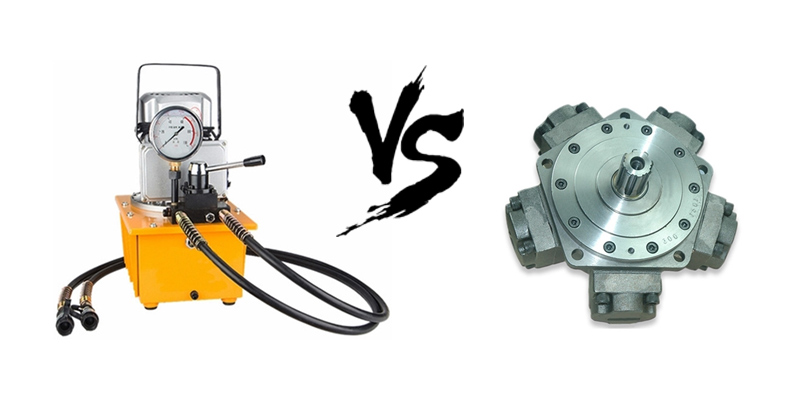Hydraulic Pump vs. Hydraulic Motor
The structure and working principle of hydraulic pumps and hydraulic motors are very similar, and some people often confuse the two. The hydraulic pump is the place where work is required to convert mechanical energy) into pressure energy, and the system that transports the pressure oil needs to do work. The hydraulic motor converts pressure energy into mechanical energy, and the pressure oil drives the blades in the hydraulic motor to rotate, thereby driving the mechanical work connected to the hydraulic motor shaft. ATO.com provides hydraulic pumps and hydraulic motors are energy conversion elements in hydraulic transmission systems. What's the difference between the two?
- In principle, the hydraulic motor and hydraulic pump are reversible. If driven by a motor, the output is pressure energy (pressure and flow), which is a hydraulic pump. If the pressure oil is the input and the output is mechanical energy (torque and speed), it becomes a hydraulic motor.
- Structurally, the two are similar.
- The hydraulic motor and the hydraulic pump have the same basic structural elements - a closed and cyclically variable volume and a corresponding oil distribution mechanism. The working principle of the hydraulic motor and the hydraulic pump is to use the change of sealing working volume to absorb and discharge oil.
- For hydraulic pumps, oil is sucked when the working volume increases and high-pressure oil is discharged when the working volume decreases. For hydraulic motors, high-pressure oil enters when the working volume increases and low-pressure oil is discharged when the working volume decreases.

Differences Between Hydraulic Motor and Hydraulic Pump
- The hydraulic pump is a conversion device that converts the mechanical energy of the motor into hydraulic energy. It outputs flow and pressure, and it is hoped that the volumetric efficiency is high. The hydraulic motor is a conversion device that converts the pressure energy of the liquid into mechanical energy. It outputs torque and rotational speed, and it is hoped that the mechanical efficiency is high. Therefore, the hydraulic pump is the energy device, and the hydraulic motor is the actuator.
- The steering of the output shaft of the hydraulic motor must be able to rotate forward and reverse, so its structure is symmetrical; and some hydraulic pumps (such as gear pumps, vane pumps, etc.) have clear regulations for steering, which can only be rotated in one direction, not at will Change the selection direction.
- In addition to the oil inlet and outlet ports, the hydraulic motor also has a separate oil leakage port. Hydraulic pumps generally only have inlet and outlet ports (except for axial piston pumps), and the leaking oil in them is communicated with the oil inlet.
- The volumetric efficiency of hydraulic motors is lower than that of hydraulic pumps.
- Usually, the working speed of the hydraulic pump is relatively high, while the output speed of the hydraulic motor is low.
- In addition, the oil suction port of the gear pump is large and the oil discharge port is small, while the suction port and the oil discharge port of the gear hydraulic motor are the same size.
- The number of teeth of the gear motor is more than that of the gear pump.
- The vane of the vane pump must be installed obliquely, while the vane of the vane motor is installed radially; the vane of the vane motor relies on the swallow-type spring at the root to press it on the surface of the stator, while the vane of the vane pump relies on the pressure of the root. Oil and centrifugal force act on the stator surface.
In terms of the working principle, both hydraulic motors and hydraulic pumps work by changing the volume of the sealed working chamber. However, due to their different use purposes, there are many differences in structure, and generally, they cannot be directly reversed.

